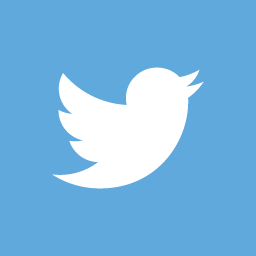Is Dancehall Going To Be Mainstream Again?
13 years after Dutty Rock, people in the music industry are ready to make dancehall pop again. Will they succeed?
Once upon a time, Sean Paul was among the biggest pop stars in the world. His tour-de-force 2002 LP, Dutty Rock, charted in the Top 10 both in the US and in the UK. Singles like “Gimmie the Light” and “Get Busy” defined a slice of early aughts pop radio and earned the Jamaican singer a guest feature on Beyoncé’s debut album. Not long afterwards, Elephant Man had clubs from Kingston to Kansas signalling the plane and rowing the boat, planting dancehall’s gold, green, and black flag in the so-called mainstream. But the genre vanished from pop culture seemingly as quickly as it had arrived. While it continues to thrive throughout the Caribbean and in hubs for diasporic populations like Toronto, New York, and London, in recent years dancehall’s crossover presence has largely been relegated to the occasional Rihanna or Nicki Minaj track. However, new developments over the past year suggest that, a decade-plus after Dutty Rock, the music industry is ready to make dancehall pop again.
Recently, Atlantic Records—the label behind Sean Paul, Elephant Man, and one-time soca star Kevin Lyttle—signed Queens-via-Jamaica dancehall singer Kranium off the strength of his Soundcloud hit “Nobody Has to Know.” Earlier this year, Universal Canada signed Lucas DiPasquale, a (white, non-Jamaican) 19-year-old from Toronto who came to prominence thanks to YouTube acoustic covers of Popcaan songs and an apparent mastery of Jamaican patois. Kanye West and Kendrick Lamar each featured dancehall vocals on their latest projects, both of which are among the biggest rap albums of the past couple of years. Two of 2015’s most-streamed pop tracks, OMI’s “Cheerleader” and Shaggy’s “I Need Your Love,” have the DNA of the artists’ native Jamaica braided into them. Popcaan is making waves globally, with relentless Drake co-signs, a guest vocal spot on Jamie xx’s song-of-the-summer contender, “I Know There’s Gonna Be (Good Times),” and, of course, a 2014 FADER cover. Drizzy himself has introduced a cover of Sizzla’s “Dry Cry” to his current set.
Kranium, the new Atlantic signee, concurs that there’s something afoot. “For years in dancehall, we had the music but we never had the resources. I’m truly a dancehall man, so me signing to Atlantic, it means a lot to me,” he told The FADER. Pointing to Assassin’s contributions on Yeezus and To Pimp a Butterfly, Kranium says that there’s much to be gained from associations with rap and R&B acts. “Nowadays, you hear [dancehall] getting more airplay. It’s finally drawing people again. Imagine you heard Kranium on a song with Jay Z or Drake? It’s the best of both worlds.” A remix of “Nobody Has to Know” featuring Ty Dolla $ign was recently released by the label, and an enduring, unofficial Chris Brown edit wound up getting Kranium buzz in the clubs over the past year. Both recall the distant-seeming mid-2000s, when major labels orchestrated mutually beneficial trade-offs with dancehall remixes of charting hip-hop songs: Jamaican artists could mine the universal popularity of rap and R&B, while stateside artists had access to the analogous cool of one of the world’s most consistently innovative genres.
LaToya Lee, Warner Music’s Director of Worldwide Urban A&R and the person responsible for Kranium’s signing, told The FADER that dancehall is indeed on the cusp of a revival. “Music was missing something that had been a staple for years. What the signing of Kranium does for reggae and dancehall’s influence on mainstream is it makes music exciting again. It opens up the eyes and ears of the creators to a genre and culture they’ve haven’t been exposed to in a while or at all,” she said over email. “It’s important to be ahead of the curve and to be leaders in the resurgence of a genre that has a global influence.”
Dre Skull, a New York-based producer and DJ who has worked with some of the biggest acts in dancehall and who releases Popcaan and Vybz Kartel via his Mixpak record label, thinks the uptick in major label interest is indicative of a larger trend. “From Mixpak's perspective, we've been approached by major labels about Popcaan, so they obviously have a lot of awareness of him,” he told The FADER. “Rihanna, she's working on her album, and I know firsthand and secondhand that she's been reaching out to a lot of people in the dancehall world. It could potentially mean a lot.”
The renewed links between dancehall and the biggest acts in hip-hop and pop could spur more label investment in the genre, by suggesting that it has the potential to bring in big returns. A push from some of the big artists mentioned above, who are power centers and informal A&Rs in their own right, could help dancehall once again break out of its regional markets. “I have a great hope, like, just on the basis of popular and powerful artists supporting [dancehall],” says Dre, who admits to having a vested interest in the mainstreaming of the genre. “Ultimately, those people are setting an example when they share their love for Jamaican music. They put certain artists on and then put the genre on in general.”
Despite that hopefulness, some of the obstacles that prevented dancehall from maintaining its full-scale momentum a decade ago still apply, and will likely continue to be points of contention. Back in the day, says Dre, “labels would sign artists and be really excited about the work they were already doing in Jamaica, but then they wouldn't quite know how to make records with them, market them, or work with them in a beneficial way for all parties.” Acts like Tanto Metro & Devonte and Elephant Man had major label deals that didn’t yield the global longevity they implicitly promised. Labels came to learn firsthand the difficulties of creating new markets for dancehall artists, who had already managed to make themselves stars independently. How, for instance, do you bolster record sales with concerts, and ramp up radio spins with tried-and-true station visits, if the artist can't get a US visa?
But there were other factors, too. Growing dancehall’s reach beyond the diasporic strongholds where it has a natural presence often means losing the cultural context that nurtures it. Max Glazer, a Caribbean music DJ of the Federation Sound crew and a longtime industry insider, says the attempts are often met with failure. “Historically, I’ve watched a lot of things stall when you have songs and records that get big to a point and then you’re trying to push them in the Midwest or certain places in the South. When they get to urban radio stations where there’s not naturally a Caribbean population, there seems to be a lot of times that there’s a disconnect,” Glazer said. “Dancehall and Caribbean music is so strong and has—not such a strong record-buying base—but has such a strong base culturally that it’s never going away, but it’s not always easy to break.”
A 1991 New York Times story, which attempted to introduce dancehall to the paper’s audience a decade before its global rise, made a similar case. “Reggae reached out to the world in the 1970's and 1980's, while dancehall, with its limited melodic vocabulary and thick accent, seems determined to exclude outsiders,” wrote Jon Pareles, in an explanation of why songs with broadly identifiable Caribbean features—steel pans or sticky melodies—would grab non-Jamaican audiences more readily than the denser, brasher strokes of dancehall. Though the genre has changed a lot since then, often creating its own aesthetic trends and sometimes borrowing from EDM, US hip-hop and R&B, Afrobeat, and other sounds, it still requires a certain cultural literacy that people outside of those aforementioned diasporic cities simply might not grasp. Patois presents a language barrier for a lot of people. So, too, does not being a natural dancer, given that the music rests largely on the art of winding one’s waist to a driving dancehall riddim.
In many ways, those are hurdles that the likes of Rihanna and Universal signee DiPasquale get to bypass, by presenting more accessible, poppy iterations of dancehall. At best, they can act as translators of dancehall culture for broader audiences; at worst, DiPasquale, despite having deep industry co-signs, has the potential to make a larger fortune off of the culture than its originators will. As someone who is young, white, and has the conventional good looks of a teeny-bopping pop star, there is a significantly simpler path to marketing him via Top 40 radio. The sum of DiPasquale’s new single, “Do It Like,” which features two Jamaican-born artists and a Jamaican-Canadian—Stylo G, Konshens, and Kardinall Offishall—lends him the credibility of the island while his identity insulates him from many of the hindrances that affect the dancehall artists he’s mimicking.
While the genre’s footprints have persisted in the form of subtle influences on pop music, that doesn’t necessarily mean the mainstream is ready or willing to accept another wave of Jamaican artists. “There’s generally more back-and-forth and dialogue between [dancehall] and urban music, pop music,” said Glazer, “but it’s been awhile since there has been any major, major Caribbean crossover records. My thought process is never, like, ‘Cool, the floodgates are open!’ I think that’s too optimistic. It’s just this kind of like slow build, and baby steps continue to happen.”
For traditional dancehall artists, the reality will likely settle somewhere in the middle ground, closer to the slow build Glazer speaks of than the sweeping success Atlantic hopes to have with Kranium. Take recent viral star Gully Bop, for example: his career was entirely jumpstarted by a rogue freestyle initially spread through social media. He has since purveyed that into merch sales and sold-out club dates in Europe and North America. Bop is unlikely to crossover with a major international radio hit, but he gets to have some sort of career nonetheless, buoyed by the internet’s piqued interested.
Similarly, fans interested in dancehall can turn to Soundcloud, YouTube, and, in more and more cases, services like Spotify to listen to hits or scour for obscure recordings—no longer do you have to rely on someone’s cousin to bring the latest heat back from Jamaica in the form of mix CDs. In the same way that the internet agitated entertainment infrastructures over here, so too did it leave once-dominant Jamaican artists flailing. The emergence of digital platforms stunted CD sales and required artists to excavate for new avenues for distribution, promotion, and income. But though those technical factors may have once stalled the genre, if harnessed they will incubate dancehall’s consistent growth and the possibility of yet more internet-facilitated culture-bending. In other words, we may never get another Dutty Rock-level smash, but dance will never die.




